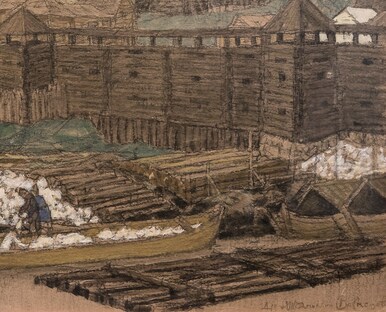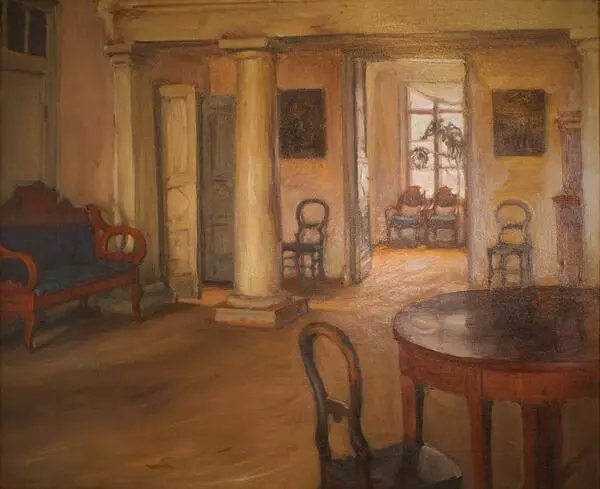Alexander Viktorovich Moravov was a landscape artist and painter of genre compositions. He studied at the Kyiv Art School under Nikolay Ivanovich Murashko and then at the Moscow School of Painting, Sculpture and Architecture under Abram Yefimovich Arkhipov, Nikolay Alexeyevich Kasatkin and Valentin Alexandrovich Serov. He was a member of the Society for Traveling Art Exhibitions (the Peredvizhniki group) and the Association of Artists of Revolutionary Russia. Moravov belonged to the younger generation of Peredvizhniki artists.
Preserving the Realistic traditions, as well as social and educational ideals of the Peredvizhniki group, Alexander Moravov created works, where he mainly explored the theme of peasants and everyday country life. His socially-oriented style was taking shape back in his days at the Moscow School of Painting when he studied under Arkhipov and Kasatkin — the renowned genre painters.
Moravov’s painting “Peasant Family in the Forest” develops the theme of the peasantry in a way that was closest to genre painters of the younger generation of the Peredvizhniks, who no longer contemplated the social issues in their works but instead gravitated toward the lyrical genre, that is the poetic expression of the people’s sentiments.
This picture can be called a genre painting. Yet the landscape here is just as important as the narrative. It is not simply a background but rather natural scenery, holding as much significance for the painting as the characters: the boy, the girl and the old woman.
The combination of genre painting and landscape, which is one of the stylistic features of Realism at the turn of the 20th century, emphasizes the author’s intention to show people living in the village, in harmony and constant interaction with nature. The developed plein-air quality of the picture, the natural color palette and the broad brush strokes used to model the shapes characterize Moravov as an artist of the Moscow school of painting.
Throughout his life, Alexander Moravov studied the life of peasants thoroughly and closely, living in Tver and spending most of the year in the village. The artist’s deep knowledge of the post-reform village, keen observation skills and ability to expressively convey the personalities of peasants allowed him to show the aspects of peasant life that felt closest to him and at the same time preserve and further develop the traditions of the Peredvizhniki art.





